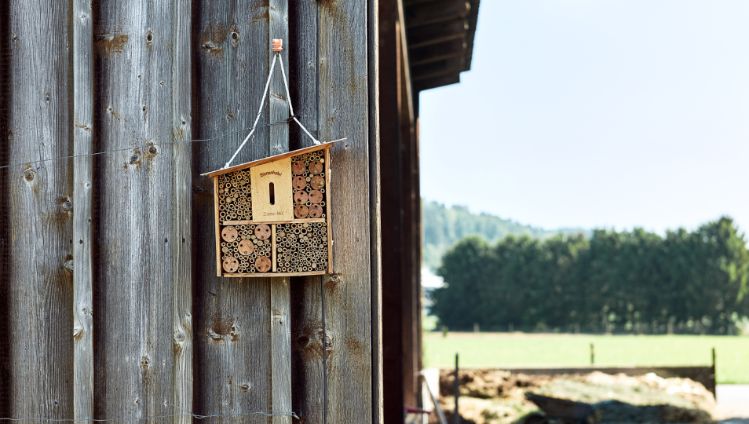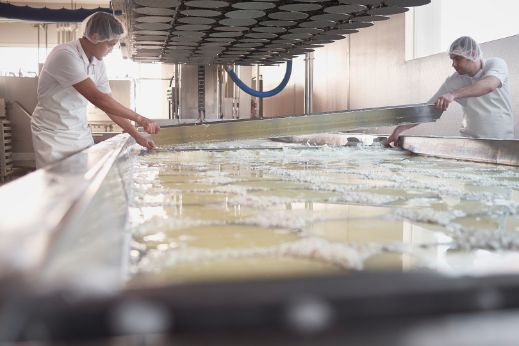
Interesting facts about our cheese
Can everyone eat cheese? Which ingredients are used in the cheese produced by Studer cheesemakers?
How can I savor the experience and make it last? We answer these and other questions here. If there is anything else you’d like to find out about our specialty cheeses please get in touch by email or give us a call.
Yes, absolutely. The same goes for people with a gluten intolerance: They can enjoy all the cheeses produced at Studer cheesemakers without worrying.
None of the cheeses at our specialty dairy contains gluten.
All the cheeses at Studer cheesemakers are lactose-free. The lactose content of the cheese depends on the maturation period.
The longer the cheese spends ripening, the less lactose it contains. All extra-hard, hard, and semi-hard cheeses are by their nature lactose-free.
During the cheesemaking process the majority of the lactose passes into the whey, which is then separated out as part of production.
The remaining lactose in the cheese is completely removed through the maturation process.
Most people with a lactose intolerance can therefore enjoy semi-hard and hard cheeses without a problem.
Apart from milk, the following ingredients can be found in our cheeses:
- rennet and rennet substitutes
- lactic acid bacteria
- spices, herbs, table salt
- water
Since we use animal-derived rennet in our cheese production, our cheese is not, strictly speaking, vegetarian.
All Studer cheesemakers’ cheeses are made using fresh, raw, Swiss cow’s milk, so they are not suitable for vegans.
The fat content in cheese is generally expressed in percentage terms.
The corresponding value does not denote the proportion of fat within the actual overall weight of the end product, however.
Instead, the fat percentage is listed as the proportion of fat in dry matter. Dry matter means the weight of the cheese if all the fluid were to be removed. Dry matter is used as a standard measure because cheese loses moisture, and therefore weight, during storage and maturation.
The actual fat content of the cheese is therefore far less than the fat content in the dry matter and the FiDM indication.
Cheese is a natural product. It continues to ripen after purchase.
There are a few guidelines you can follow when storing cheese to keep it edible and delicious for as long as possible.
Cheese will only retain its full flavor for a long time if it is stored properly.
In principle, most cheeses prefer temperatures of between 8 and 15 degrees. Hard cheese will also tolerate temperatures around freezing. In general, however, temperatures cooler than 6 degrees inhibit flavor development. Significant variations in temperature should also be avoided.
Cheese not only requires the right temperature, but also ventilation. Cheese must be able to breathe. The packaging should not be completely airtight, therefore, otherwise the cheese will go off prematurely. Fully enclosed plastic tubs are not the best way to store cheese. On the other hand, cheese that has been fully unwrapped will quickly dry out.
Cheese is best stored in special cheese paper. This protects the delectable product from drying out, while also allowing the cheese to breathe.
Where possible, store different cheeses separately. This prevents the aroma, taste, or any mold cultures on one cheese from being transferred to another.
Unpackaged cheese can also absorb the aromas from other foods, which can consequently affect its flavor.
Apropos taste: To allow the cheese to develop its full potential and deliciousness, it should be enjoyed at room temperature.
Remove cheese from the fridge shortly before eating. It should not be left to sit at room temperature for too long, however, or it will begin to sweat.
Finally: Should a small amount of mold form on the cut edges of semi-hard and hard cheese, the affected area plus a generous margin can be cut off and the cheese enjoyed as usual.
Cheese naturally tastes best fresh. With large quantities or leftovers, however, vacuum-packing and freezing are two tried and true methods for conserving it over longer periods. Hard and semi-hard cheese varieties are best suited to this treatment.
Portioned, sliced or grated, frozen cheese can be used at a later date quickly and easily – for cheese flans, cheese on toast, omelets, tortillas, gratins, fondue, or raclette.
Cheese Dairy Studer works closely with various partners together. A good network and a good relationship to various partners is really important for us.
We are a proud member and supporter of different organisations.
- Trägerverein Culinarium: www.culinarium.ch
We are a certified member and all our products are "Culinarium" certified.
- Emmi Group: www.emmi.com
We are a 100% subsidiary of the Emmi Group.
- Kompetenznetzwerk Ernährungswirtschaft: www.ernaehrungswirtschaft.ch
We are supporter of the "Expertice network of the food industry" (Kompetenznetzwerk Ernährungswirtschaft)
- Fromarte: www.fromarte.ch
We are a member of Fromarte, Association of industrial cheese dairies.
- Milchtechnologe: www.milchtechnologe.ch
We are supporter of the young academics and cheese makers education.
- TMP: www.milchthurgau.ch
Association of the Thurgauer milk producers
- Thurgau Bodensee - Geschenkharass
We are members of the "Thurgauer Geschenkharass", regional hamper
- Appenzeller Käse: www.appenzeller.ch
We produce Appenzeller cheese
- SCM - Switzerland Cheese Marketing
- Thurgauer Schwingverband: www.schwingen-tg.ch
We support the Thurgauer Schwingverband
- Christian Kuchler - Restaurant Taverne zum Schäfli: schaefli-wigoltingen.ch
Christian Kuchler is our brand embassador of the brands Käserei Studer / Der scharfe Maxx
- Cheezy: Our producers cheezy.ch
Our cheeses are part of the cheese boxes in the Cheezy online shop.
